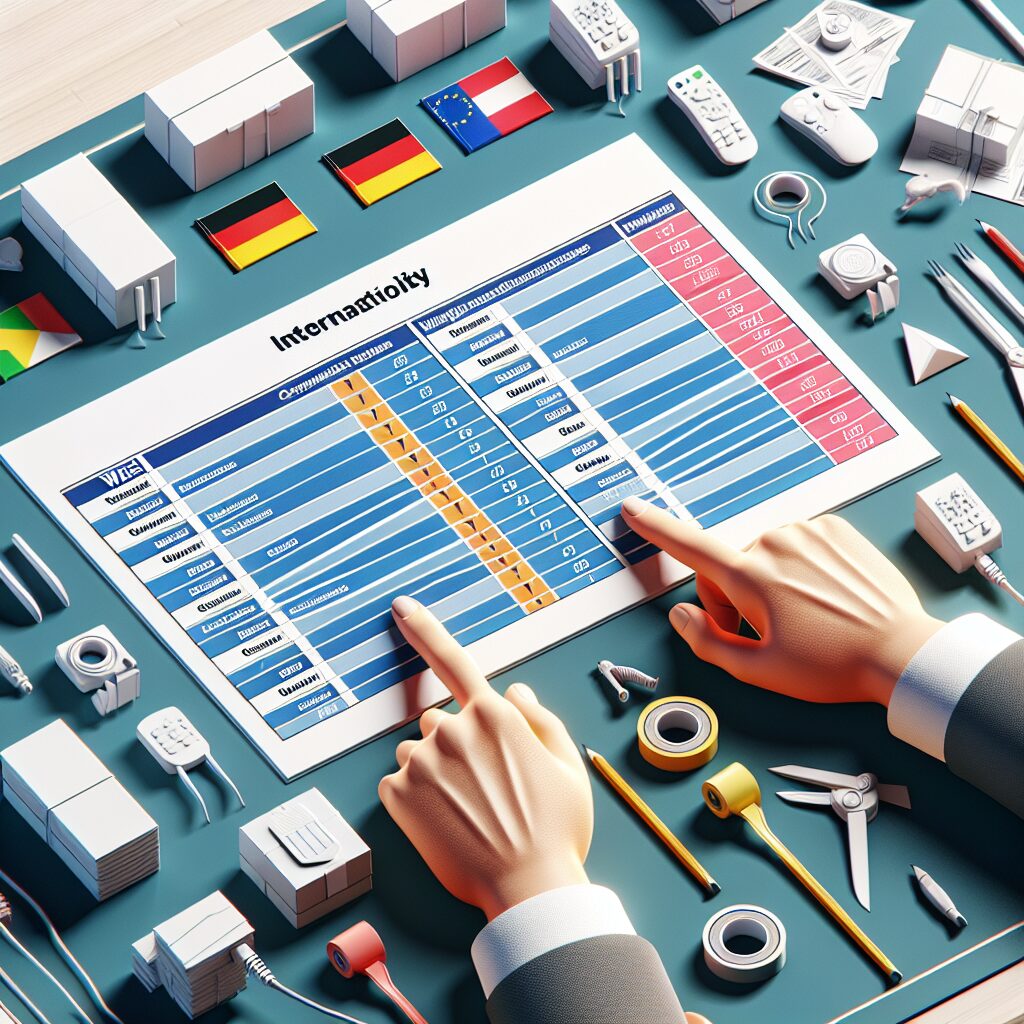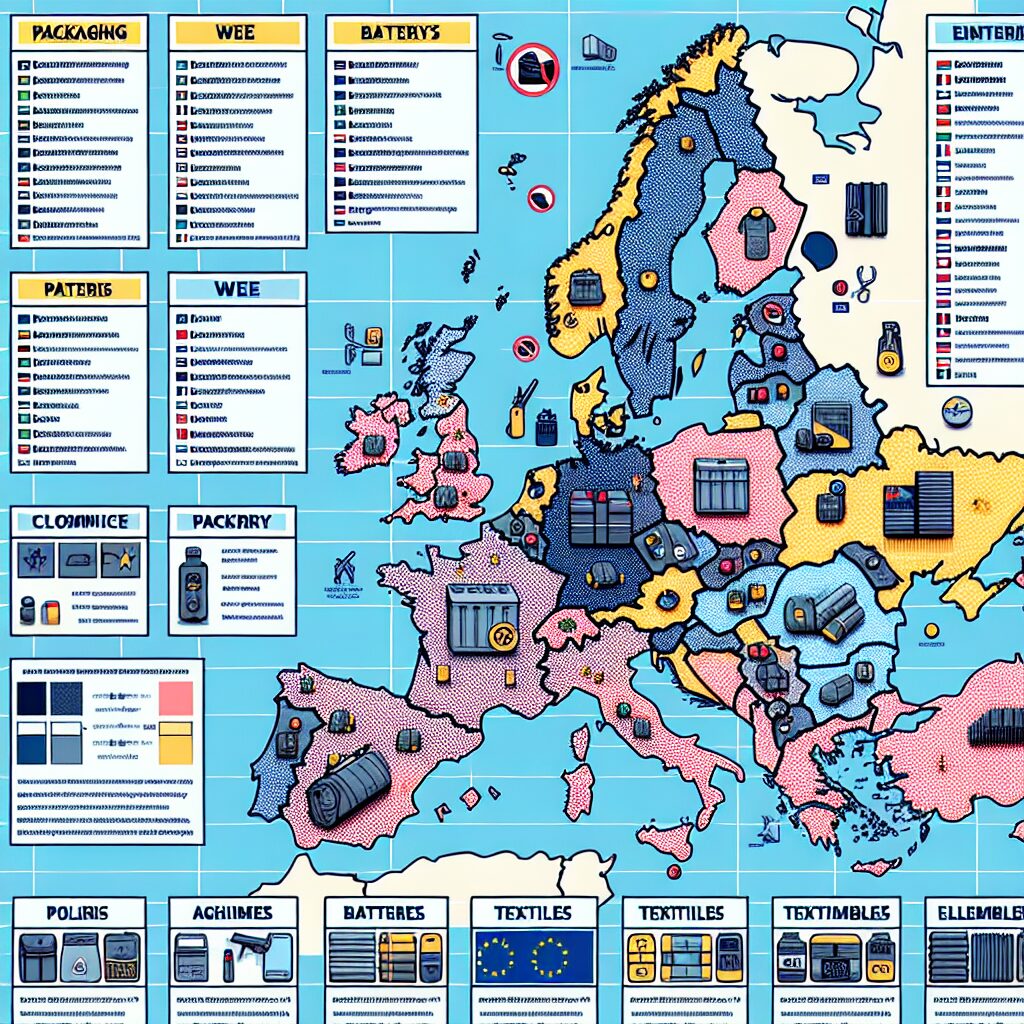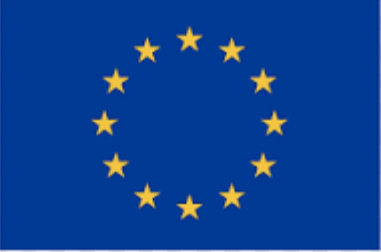About eldris
Epr.eldris.ai leads the EPR sector, in fast, automated, AI Agent EU Complaince. LUCID Packaging, WEEE, and Battery Compliance for Brands, E-Commerce and Service based businesses expanding into the EU.
In This Article
- EU EPR regulations are mandatory across most EU countries and apply to packaging, electronics, batteries, and textiles.
- Amazon and other marketplaces now require sellers to prove EPR compliance—or risk sales bans.
- Providers differ by country scope, pricing, and level of automation—choose based on operational needs.
- Flat-fee models may suit low-volume sellers; volume-based may offer savings for larger businesses.
- Digital-first solutions offer huge time savings and reduce the risk of human error in reporting.
- Always read the fine print for hidden charges in multi-country support platforms.
- Case studies show measurable savings and compliance improvements after switching EPR providers.
- Choosing the right platform can futureproof your business as regulations expand under the EU Green Deal.
- Request demos and compare coverage before committing to a provider.
- Embedding compliance into your operations shows brand responsibility and ensures you stay ahead of market changes.
Understanding EU EPR Compliance
What is Extended Producer Responsibility?
EU EPR solutions (Extended Producer Responsibility solutions) are legal mechanisms requiring producers, importers, and retailers—essentially anyone introducing goods into an EU market—to bear the financial and operational responsibility for post-consumer waste derived from their products. This approach aims to increase recycling rates, reduce environmental impact, and assign waste management obligations directly to those profiting from product sales.

The EU’s ongoing Green Deal strategy has heightened focus on EPR directives, with individual member states tailoring their enforcement. Producers must now comply with specific packaging labelling rules, register with national compliance schemes, and report volumes placed on the market. Non-compliance can result in steep fines, blocked listings on marketplaces, and disrupted operations—particularly for cross-border ecommerce.
Why Marketplace Sellers Need EPR
The Amazon Requirement Explained
As of 2022, Amazon implemented stringent compliance requirements under EU EPR regulations. Sellers targeting German and French markets must now prove EPR registration and filing before continuing operations on the platform. Amazon acts as a facilitator, enforcing compliance by requesting registration numbers—or automatically remitting EPR obligations and deducting costs from seller payouts if documentation is missing.
This mandate has caused ripple effects across digital commerce. Many sellers have scrambled to identify suitable EU EPR solutions to avoid penalties and prevent listing restrictions. As more countries introduce similar measures, ensuring correct registration across all applicable waste streams—like packaging, electronics, and textiles—is rapidly becoming indispensable.
“Ignoring EU EPR rules can halt your entire business overnight—especially on platform giants like Amazon and Otto.”
Comparing Major EU EPR Providers
The landscape of EU EPR solutions has evolved to include tech-enabled service providers, traditional compliance consultants, and in-country authorised compliance schemes. These vary considerably in terms of service scope, user-friendliness, customer support, and technology integration.
Key players include companies like Clarity Environmental, Reclay, Landbell Group, Siel, and newer tech-first providers such as EcoLegal or Compliance AI. Evaluating providers means understanding not just cost, but also how well they manage regulatory nuances across countries and whether they automate tedious reporting tasks.
Coverage Across Countries: Who Supports What?
One of the first considerations when selecting an EU EPR partner is country coverage. While some providers operate pan-Europe, others specialise in single markets. For example, Landbell offers comprehensive support for Germany, France, Italy, and Spain. By contrast, Reclay provides robust local expertise primarily in Austria and Germany.
If you’re selling products across multiple EU member states, partnering with a multi-country provider can significantly simplify compliance. These platforms typically offer one dashboard and a centralised account manager—critical for streamlining your compliance across different EPR registries and languages.
Pricing Models: Flat Fees vs Volume-Based
EU EPR solutions come with different pricing structures. Some schemes, especially those operating on a not-for-profit basis, charge annual flat fees with optional service add-ons. Others implement volume-based billing, charging per waste type or kilogram submitted in your declarations.
For instance, EcoPartner charges a transparent flat annual fee for registration support and programme access. In contrast, Compliance Collective bills transactional rates per tonne of material declared. Sellers with high volumes might benefit from per-tonne pricing, while smaller exporters could save with fixed fee providers—provided hidden charges aren’t lurking.
Automation and Reporting Features
One of the key differentiators among modern EU EPR platforms is their level of automation. Some providers still rely on cumbersome Excel tracking, email-based communications, and separate filing per market. Meanwhile, digital-first solutions allow sellers to upload marketplace exports, integrate with ERP systems, and schedule recurring reporting across jurisdictions.
For example, providers like Circular Compliance AI offer dashboard interfaces for real-time tracking of obligations, alerts for missing declarations, and bulk CSV imports across countries. This technology facilitates ongoing compliance and reduces human error—a critical factor when penalties might be issued for late or incorrect filings.
Best Tools for E-Commerce Sellers
For fast-scaling ecommerce companies, efficiency and integration are everything. The best EU EPR solutions tailor their platforms for marketplace sellers, offering plug-and-play integrations with Amazon, Shopify, WooCommerce, and other platforms. They consolidate tracking numbers, registration filings, and cost forecasting in one portal.
Sellers should seek platforms offering real-time dashboards, support in multiple languages, guided documentation uploads, and local tax ID advice. Choosing an EPR compliance tool optimised for ecommerce growth can eliminate bottlenecks that slow down your operations during peak seasons.
Compliance Efficiency: How Software Saves You Time
Time-saving is a core advantage of tech-powered EPR solutions. While traditional consultants might take days to prepare country-specific files for each submission period, cloud-based platforms automate it. This reduces the chance of compliance gaps due to human oversight.
Moreover, these tools often include inbuilt audit logs, retaining historic submissions in format-ready layouts. When customs audits or platform enforcement checks arise, these digital records can be rapidly exported—saving sellers stress, administrative costs, and reputational damage.
Hidden Fees & Risk Areas in EPR Models
Despite glossy features, not all EU EPR providers are transparent. Some charge additional ‘handling’ or ‘membership processing’ fees. Others add premiums for services like invoicing splitting, registration renewals, or changes in packaging classifications.
It’s also critical to examine how providers handle local regulatory change. Providers who update their systems in lock-step with new legislation offer peace of mind. Those who lag behind could expose you to penalties, as even a few wrong material declarations can trigger compliance investigations under the EU’s extended legislation.
Case Study: Switching EPR Providers for Savings
One Berlin-based electronics retailer, GreenGadget EU, reduced their annual EPR costs by €3,200 after switching from a multi-service consultancy to a software-first compliance solution. Their legacy provider required manual data entry, monthly customer follow-ups, and unexpected quarterly “processing” fees.
Upon switching to EcoComply, the company gained auto-integrated Amazon reporting, instant registration verification for five countries, and 24/7 customer dashboard access. Within one quarter, employee hours reduced by 25%, error rates dropped to near zero, and GreenGadget reported significantly faster approval of marketplace listings.
Top 5 Value-Optimised EPR Platforms
For those seeking high-impact, low-cost compliance support, here are five lead platforms offering optimised EU EPR solutions:
- EcoComply: Best for ecommerce-first compliance and automation.
- Clarity Environmental: Robust for UK-based sellers expanding into France and Germany.
- Landbell Systems: Excellent multilingual support and pan-European licensing reach.
- Compliance Collective: Ideal for high-volume producers needing granular data segmentation.
- Circular Compliance AI: Great for AI-based forecasting and custom reporting setup.
Final Thoughts: Choosing the Right Compliance Partner
[CONCLUSION_CONTENT]
Choosing from the myriad EU EPR solutions available today may feel overwhelming, particularly as EU countries continue to strengthen enforcement. However, the right compliance partner not only helps you meet legislative demands but also becomes a valuable optimisation asset for cross-border ecommerce.
We strongly recommend conducting a detailed cost-benefit analysis, requesting demo access to reporting dashboards, and reading peer reviews before committing. Whether you’re a startup or scaling seller, adopting a transparent, tech-powered EPR provider can free up resources for growth, while ensuring your EU operations remain secure and fully sanctioned.
Great guide on compare-eu-epr-compliance-solutions-savings-interactive – Community Feedback
How do EU EPR compliance services differ?
EU EPR compliance services vary by automation, coverage, and included reporting. Some platforms centralise registration, submission and updates across countries, helping sellers cut costs and reduce admin. Others may require manual processes or limited national coverage.
Which EPR provider saves sellers the most money?
Providers using automation and consolidated EU-wide support typically save the most, minimising errors and redundant admin. Comparing fixed fees, volume discounts, and included features helps identify the service with the best long-term value.
Are marketplace sellers required to use specific EPR solutions?
Most marketplaces like Amazon require sellers to prove EPR compliance using accepted registration numbers for packaging, WEEE, and batteries. Sellers can choose any compliant provider meeting national and EU rules, but automated platforms streamline ongoing obligations.










